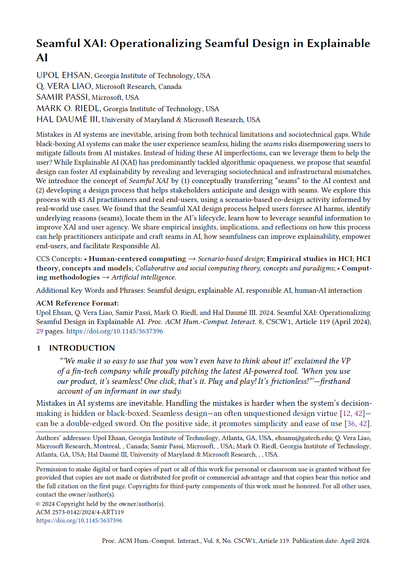🧵 [1/n]
All AI systems make mistakes.
🧐 What if users could leverage AI flaws to understand it & take informed actions?
🚀 Our #CSCW2024 paper on Seamful XAI offers a process to foresee, locate, & leverage AI flaws—boosting user understanding & agency.
📜 https://arxiv.org/pdf/2211.06753
But why should you care?⤵️
1/n
w/ @Riedl @hal Samir Passi @qveraliao #academia #HCI
